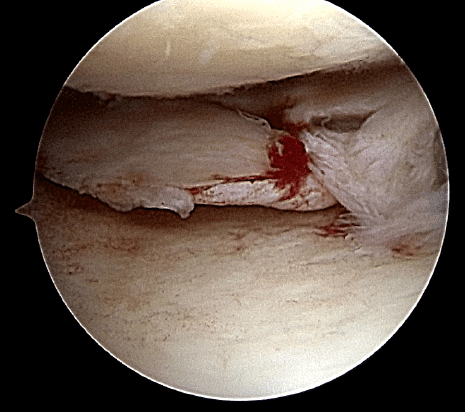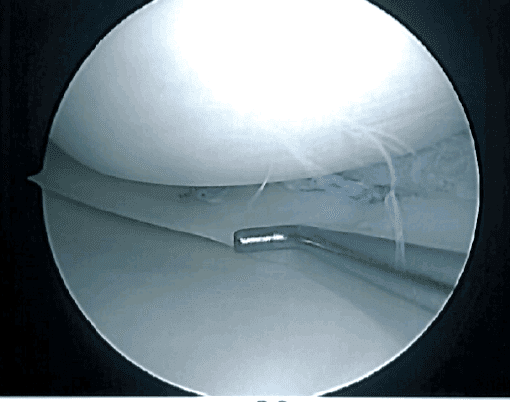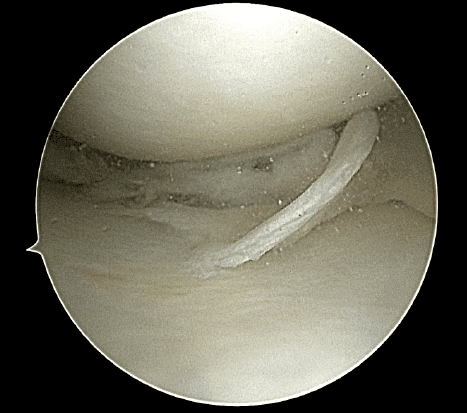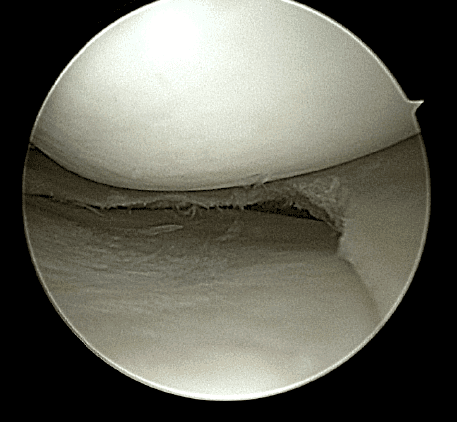Meniscus Surgery
Award-Winning Orthopedic Services in Orange County
A torn meniscus is an extremely common knee injury, often resulting from a sports injury or degenerative changes in older adults. If your knee pain, stiffness, or joint instability persists despite completing nonsurgical treatment options for your meniscus tear, your knee surgeon may recommend meniscus surgery.
When performed by a board-certified and fellowship-trained orthopedic knee surgeon and followed by dedicated physical therapy, meniscus tear surgery has a high success rate in relieving pain and restoring knee function and mobility. Hoag Orthopedic Institute’s nationally recognized orthopedic team creates a personalized knee treatment plan that supports you from diagnosis to meniscus repair surgery and through the physical therapy that will help you feel like yourself again.
What is Meniscus Surgery?
Meniscus surgery is an operation that repairs, removes, or — less commonly — replaces a torn meniscus. The meniscus is the crescent-shaped cartilage pad that acts as a cushion between the femur (thigh bone) and the tibia (shin bone) in the knee joint.
When the meniscus is torn or damaged, torn meniscus surgery aims to repair it. If it cannot be repaired, the surgeon may remove the damaged portion, preserving as much healthy tissue as possible to maintain joint health and minimize long-term impact.
Common Types of Meniscus Surgery
There are three types of meniscus surgery:
- Meniscus repair
- Partial meniscectomy
- Meniscus replacement
The type of meniscus tear surgery needed is determined by the location, pattern, and healing potential of the tear. For meniscus tears caused by sudden injury that have a simple pattern and good potential for healing, meniscus repair is usually recommended (Figure 1). A meniscus repair is considered when the patient is generally healthy and wishes to remain active, the meniscus tissue is of good quality, and the meniscus tear is located in the periphery of the meniscus. Meniscus repair surgery involves sewing the tear together using high-strength sutures or specialized implants (Figure 2).
Figure 1:

Figure 2:

Meniscus repair surgery is routinely done arthroscopically (minimally invasive), though some complex tears — especially those located near neurovascular structures or requiring reattachment to the bone — may require a combination of arthroscopy and small open incisions. While recovery from a meniscus repair is longer than for a meniscectomy, preserving a repairable meniscus helps protect the joint over time.
A partial meniscectomy is more often recommended when the tear results from degeneration over time, involves a complex pattern, or has poor healing potential (Figure 2, above). Partial meniscectomy is a minimally invasive outpatient procedure performed arthroscopically and consists of removing the damaged portion of the meniscus (Figure 3, below). The surgeon preserves as much of the meniscus as possible to help limit the progression of arthritis in the future.
A meniscus replacement may be considered rare in cases of healthy young patients who have persistent knee pain following a prior meniscectomy. This meniscus surgery involves transplanting donor cartilage.
Figure 3:


Surgery for a Torn Meniscus: What to Expect
Meniscus surgery is typically performed arthroscopically on an outpatient basis. The surgery takes just 30 minutes to an hour and is performed under general or regional anesthesia. You will be asked to fast and stop certain medications prior to your procedure. Arrange for someone to drive you home.
You will be provided with post-op instructions following meniscus tear surgery, including resting, elevating, and icing your knee and using crutches. Plan to follow all physical therapy sessions and recommendations to recover your knee strength, function, and mobility fully.
Meniscus Surgery Recovery Time and Rehabilitation
Your knee surgeon will recommend physical therapy as part of your meniscus
surgery recovery to help improve muscle strength and joint stability.
Initially, you will likely use crutches to help keep weight off your knee,
and your knee doctor may recommend wearing a brace to maintain knee stability
postoperatively. Meniscus repair surgery typically requires 3-6 months
of recovery.
With a partial meniscectomy, you may want to use crutches during the first
week to avoid bearing weight on your knee. However, most surgeons recommend
that patients try walking without crutches, bending their knees, and begin
stretching and strengthening exercises as soon as possible after surgery
to keep the knee joint and surrounding muscles flexible. Patients typically
recover within 6 weeks. Most are able to return to work within a few days
or 1-2 weeks postoperatively, provided their work doesn’t involve
a lot of standing, walking, or lifting heavy items.
Risks and Benefits of Meniscus Operations
Meniscus operations, such as meniscus repair surgery and partial meniscectomy, have a high success rate, especially when they are performed by an experienced orthopedic knee surgeon and the patient follows their physical rehabilitation plan. The benefits of surgery for a torn meniscus include reduced knee pain, improved joint stability, and restored mobility, so you can return to work, your favorite sport, and daily activities with greater function and less discomfort.
Like any operation, torn meniscus surgery carries some risks. While meniscus surgery is generally safe and effective, it’s essential to follow your surgeon’s post-operative instructions to reduce risk and support a strong recovery. A fellowship-trained orthopedic surgeon who specializes in knee surgery or sports medicine, has in-depth training to provide the best outcomes for their patients.
Get Expert Care for Your Torn Meniscus
Hoag Orthopedic Institute’s board-certified, fellowship-trained knee surgeons are experts at meniscus surgery. Trust the physicians who treat the Los Angeles Chargers with your treatment. Let our knee doctors get you back to doing the things you love.
Hoag Orthopedic Institute is ranked as one of the top Orthopedic Hospitals by U.S. News & World Report in 2024-2025.
Call (949) 705-6493 today to schedule a consultation with one of our knee surgeons.
Find a Knee Surgeon
-
 Returning to Boxing After Surgery Knee, Sports Medicine
Returning to Boxing After Surgery Knee, Sports Medicine"Procedure: Right Total Knee Arthroplasty When Brad retired nearly 20 years ago at age ..."
Read More -
 Back to Mobility and Me Knee
Back to Mobility and Me Knee"Procedure: Bilateral Total Knee Arthroplasty Seeing the world from the back of a Gold ..."
Read More -
 Back to Skiing Knee, Sports Medicine
Back to Skiing Knee, Sports Medicine"Procedure: Simultaneous Bilateral Total Knee Arthroplasty (SBTKA) – October 2016 ..."
Read More -
 Back to Gardening Knee
Back to Gardening Knee"Verna’s days are much more fruitful after having repairs to both knees. For the first ..."
Read More -
 Back to Golf After Knee Replacement Knee
Back to Golf After Knee Replacement Knee"Retired dentist Dr. Gregory Cramm and his wife, Cathy, enjoy going out for a nice ..."
Read More -
 Back to Racing Knee
Back to Racing Knee"Racecar driver Danny Thompson, 67, set the national land speed record at 406.7 mph in ..."
Read More -
 Back to Skiing and Snowboarding Knee
Back to Skiing and Snowboarding Knee"Rick Rengel, age 58, was having a great time speeding down a ski slope in Utah in ..."
Read More -
 Back to Cooking Knee
Back to Cooking Knee"“If I hadn’t had my knee replaced, I wouldn’t be out and about – I would be home in ..."
Read More -
 Back to a Family Christmas Knee
Back to a Family Christmas Knee"My wife, Lucille, was admitted to the Hoag Orthopedic Hospital, Irvine, California ..."
Read More -
 Back to the Golf Course Knee
Back to the Golf Course Knee"Shooting pain down the leg. Too painful to stand more than minutes. Sitting up to ..."
Read More










